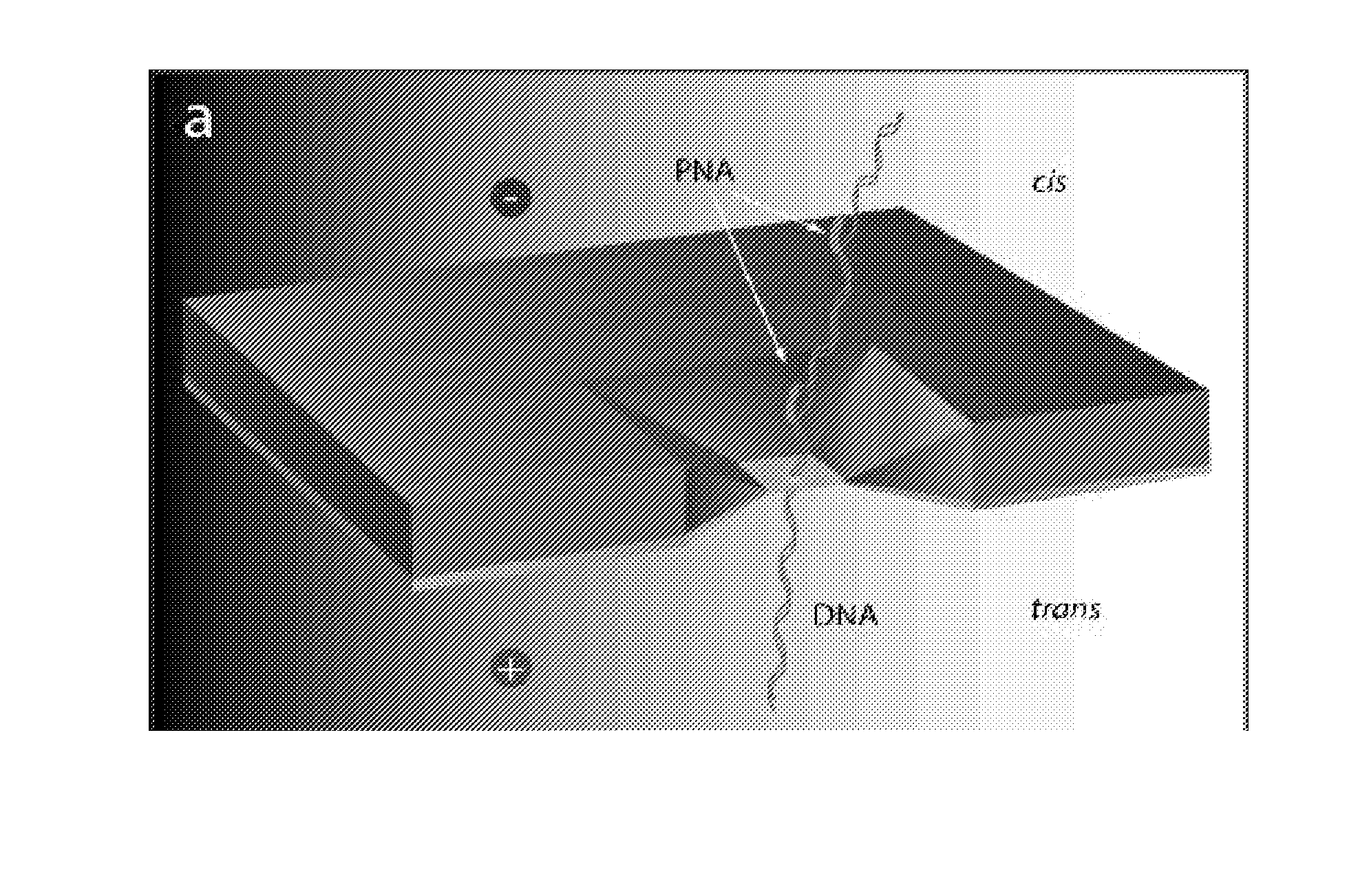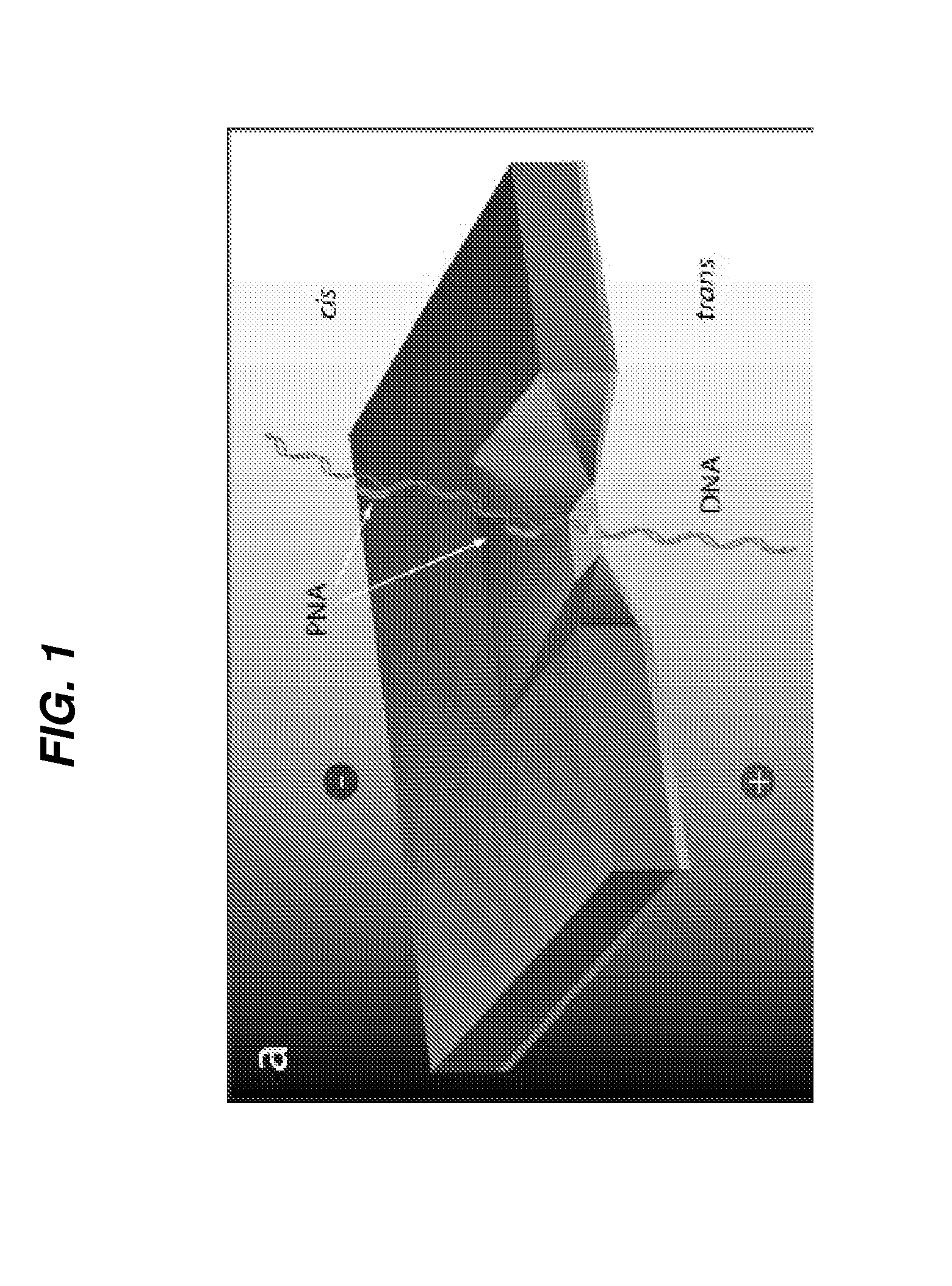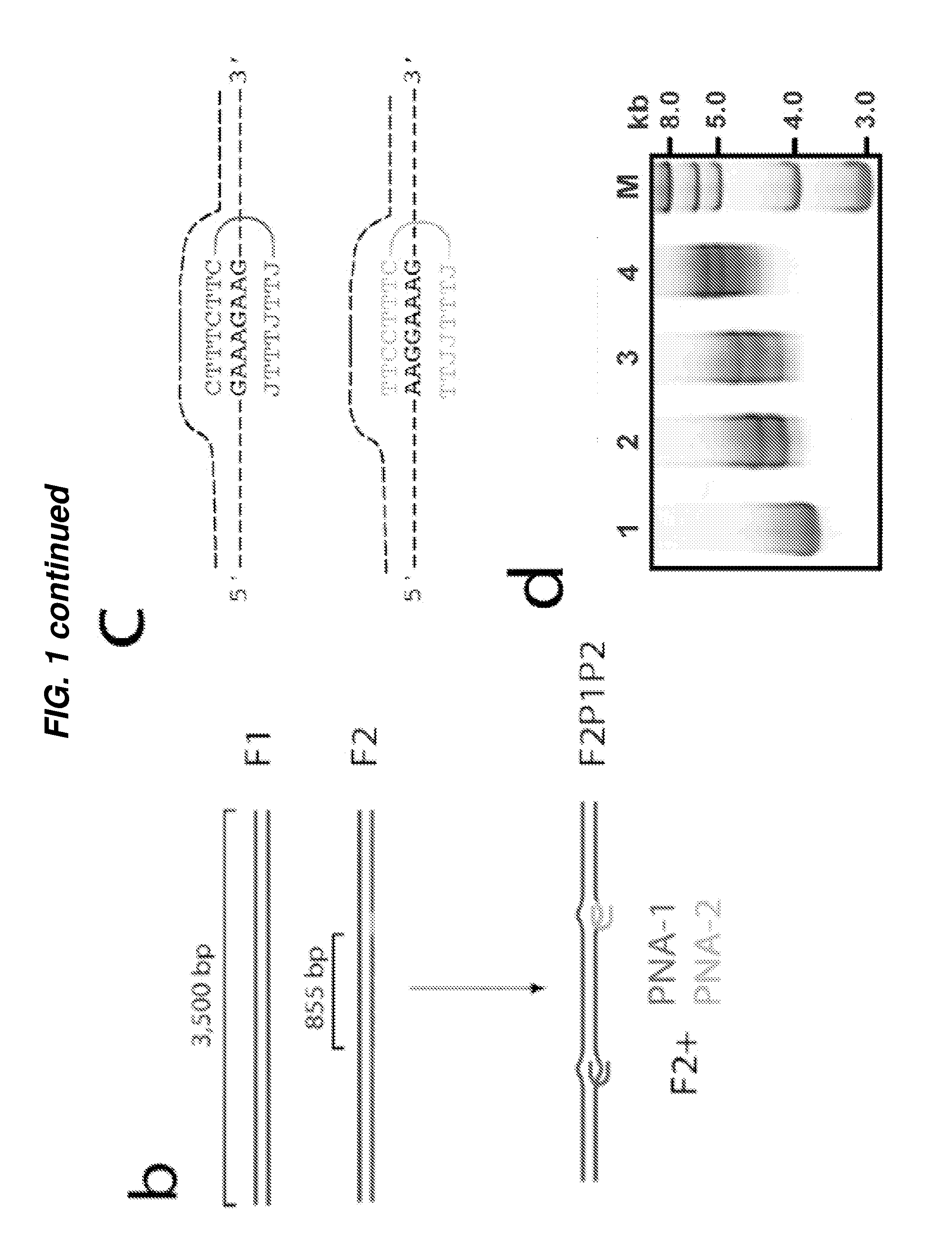Label-free sensing of pna-dna complexes using nanopores
a pnadna complex and nanopore technology, applied in the field of label-free sensing of pnadna complexes using nanopores, can solve the problems of not being parallelized, routineized, nor cost-effective enough to compete with other “next generation sequencing” methods, and not being able to distinguish a pool of same-sized ss nucleic acids and/or ds nucleic acids on the basis of sequence differences, so as to increas
- Summary
- Abstract
- Description
- Claims
- Application Information
AI Technical Summary
Benefits of technology
Problems solved by technology
Method used
Image
Examples
example 1
[0178]FIG. 1a shows a schematic of a nanopore system for the detection of PNA-DNA complexes in a ds DNA. A solitary 4-5 nm pore fabricated in a thin (˜20 nm) SiN membrane is assembled between two miniature fluid chambers (‘trans’ and ‘cis’), and hydrated using a 1M KCl buffered solution, as previously described (7). A voltage bias is then applied across the SiN membrane using a pair of AgCl electrodes. When the trans chamber is positively biased, DNA molecules in the cis chamber (4) thread through the nanopore into the trans chamber. To show that nanopores can discriminate among PNA-bound and PNA-free DNA samples, two DNA fragments (PCR-amplified from the -phage genome) of nearly equal lengths were have prepared (3,500 bp, see FIG. 1b). The first fragment (F1) serves as a negative control, which does not include target sequences for either of the two bis-PNA probes (PNA-1 and PNA-2). The positive sample (F2) contains two different binding sites for our bis-PNA probes (see sequences ...
example 2
[0182]In this example, the inventors show the use of two bis-PNA to create a P-loop and the detection of that P-loop. Two bisPNA probes were used to bind to two closely spaced binding sites on a linearized pUC19 plasmid. The two closely spaced binding sites represent the signature site in pathogen genome. As a result, an extended P-loop comprising of 19 nt in each strand was formed (FIG. 5). The target sequence was located approximately 500 bp from one end of the plasmid and 2200 bp from the other end, as shown in the figure. Complex formation was confirmed by nondenaturing gel electrophoresis, which showed a clear shift in the mobility of the DNA / PNA hybrid molecule as compared to the untagged DNA lane (data not shown).
[0183]A 4 nm diameter nanopore was used to compare the hybridized complex with a control of intact, double-stranded linear pUC19. FIG. 6 shows a typical DNA translocation events (FIG. 6a) of the 2700 bp plasmid control DNA, and typical translocation events of the DNA...
example 3
[0185]The nanopore based assays using γ-PNA probes are conducted in the same manner as for the nanopore based assays using bis-PNA except that the nanopore is 3.5 nm.
[0186]For this study, the inventors took a 1 kbp dsDNA molecule, with a single binding site located in the center (so ˜500 bp on either side of the γ-PNA binding site) and compared the readout signal from the nanopore based assay (FIG. 9). The parameters for the nanopore system are as described in Examples 1 and 2.
[0187]FIG. 9a shows an exemplary data obtained for the control experiment where no γ-PNA is added and mixed with the dsDNA, illustrating qualitatively an electrical current trace of a handful of single-molecule translocation events. Similar to FIGS. 2a and 6a in Examples 1 and 2 respectively, the single-molecule translocation events are seen as single block drop in the electrical current trace, which are identified quantitatively in an all-points histogram (FIG. 9a right side).
[0188]FIG. 9b shows an exemplary ...
PUM
| Property | Measurement | Unit |
|---|---|---|
| Diameter | aaaaa | aaaaa |
| Electric potential / voltage | aaaaa | aaaaa |
| Electrical conductance | aaaaa | aaaaa |
Abstract
Description
Claims
Application Information
 Login to View More
Login to View More - R&D
- Intellectual Property
- Life Sciences
- Materials
- Tech Scout
- Unparalleled Data Quality
- Higher Quality Content
- 60% Fewer Hallucinations
Browse by: Latest US Patents, China's latest patents, Technical Efficacy Thesaurus, Application Domain, Technology Topic, Popular Technical Reports.
© 2025 PatSnap. All rights reserved.Legal|Privacy policy|Modern Slavery Act Transparency Statement|Sitemap|About US| Contact US: help@patsnap.com



